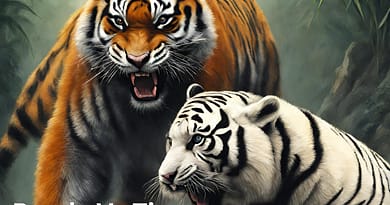Tiger Illustrated: A Journey into the Artistic Wilderness
Introduction:
The tiger, with its majestic stripes and powerful presence, has long been a symbol of beauty and strength in the animal kingdom. “Tiger illustrated” art captures this essence, bringing these magnificent creatures to life on canvas and paper. In this blog post, we will explore the world of tiger illustrations, from traditional techniques to modern interpretations in the tiger illustrated west zone.
The Captivating World of Tiger Illustrations
The Essence of Illustration Tiger
Tiger illustrations offer a glimpse into the tiger’s world, showcasing their grace and majesty. These artworks vary in style and technique but always aim to capture the tiger’s spirit.
Techniques and Styles in Tiger Art
Tiger art encompasses a range of techniques, from intricate pencil sketches to bold digital designs. Artists often experiment with colors and textures to bring their “tiger illustration” to life.
Regional Variations in Tiger Illustrated Art
Tiger Illustrated West Zone
In the western zone, tiger illustrations often blend traditional western art styles with the exotic allure of the tiger. This unique combination results in diverse and captivating artworks.
Cultural Significance of Tiger Art
Tiger art is not just visually stunning; it holds cultural and symbolic importance. In many cultures, tigers represent strength, courage, and royalty.
The Process of Creating Tiger Art
From Concept to Creation Creating an “illustration of a tiger” involves several steps. Artists start with a concept, then sketch the basic outline, and gradually add details and colors.
Materials and Tools
Various materials are used in tiger illustrations, including:
- Pencils and charcoal for sketching
- Watercolors and acrylics for painting
- Digital tablets and software for digital art
Notable Artists in Tiger Illustrations:
One of the most remarkable aspects of tiger illustrated art is the diverse array of artists who have contributed to its evolution. Notable figures in this field include Robert Bateman, a Canadian naturalist and painter known for his realistic wildlife paintings, including stunning tiger portraits. Bateman’s works are characterized by their meticulous attention to detail and vivid portrayal of the natural habitat, making his tiger illustrations truly captivating.
Another significant contributor is Guy Coheleach, an American wildlife artist renowned for his lifelike depictions of big cats, including tigers. His paintings often capture the dynamic and powerful essence of tigers in motion, bringing a sense of immediacy and excitement to his art.
Art Movements and Techniques in Tiger Art:
Tiger illustrations have been influenced by various art movements and techniques throughout history. In the early 20th century, the Art Nouveau movement, known for its stylized natural forms and flowing lines, saw artists like Henri Rousseau creating imaginative and vibrant depictions of jungle scenes, often featuring tigers.
In contemporary art, the use of digital illustration techniques has become increasingly popular. Digital art allows for greater flexibility and creativity, enabling artists to experiment with colors, textures, and compositions in ways that were not possible with traditional mediums.
Additionally, the realism movement has had a significant impact on tiger illustrations. This style focuses on depicting subjects as accurately as possible, often emphasizing the beauty of the natural world. Artists who specialize in realism use a variety of techniques, such as layering colors and paying close attention to light and shadow, to create lifelike representations of tigers.
FAQs:
What inspires artists to create tiger illustrations?
Artists are often inspired by the tiger’s majesty, beauty, and symbolism. The tiger’s striking appearance and cultural significance make it a compelling subject for artistic expression.
How does tiger art contribute to wildlife conservation?
Tiger illustrations can raise awareness about the plight of these endangered animals. By capturing the public’s attention, these artworks can inspire conservation efforts and support for organizations working to protect tigers in the wild.
Can beginners try their hand at tiger illustrations?
Absolutely! Beginners can start with basic sketches and gradually explore different mediums. Practice and observation are key to developing skills in illustrating tigers.
What are the popular themes in tiger illustrated west zone art?
In the tiger illustrated west zone, popular themes include the fusion of traditional western art styles with the exotic imagery of tigers, as well as themes of nature, wildlife conservation, and cultural symbolism.
How has digital technology impacted tiger illustration?
Digital technology has revolutionized tiger illustration, offering artists new tools for creating detailed and vibrant artworks. It allows for greater experimentation with styles, colors, and textures, expanding the possibilities for tiger art.
Conclusion:
Tiger illustrated art is a beautiful and powerful form of expression that connects us to the natural world. Through “illustration tiger” and “tiger illustration,” artists not only showcase their talent but also pay homage to these majestic creatures. Whether it’s a traditional “illustration of a tiger” or a modern interpretation in the tiger illustrated west zone, each piece tells a story of beauty, strength, and survival. This art form not only delights the eye but also inspires us to appreciate and protect the magnificent tiger.
Related Articles:
Onitsuka Tiger Mexico 66: A Classic Sneaker with a Modern Twist









